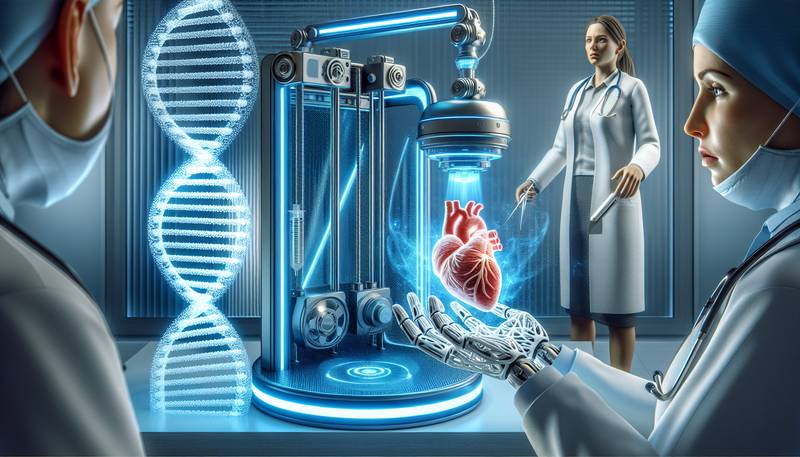3D Printing in Medicine: Transforming Healthcare with Cutting-Edge Technology

Introduction
In the past few years, 3D printing has revolutionized the medical industry in ways we never thought possible. With the ability to create custom prosthetics, surgical models, and even organ transplants, 3D printing is changing the face of medicine as we know it. In this article, we'll explore the various ways 3D printing is being used in the medical field, from prosthetics to organ transplants, and how it's changing the lives of patients around the world.
Prosthetics
One of the most well-known uses of 3D printing in medicine is in the creation of prosthetics. Traditional prosthetics can be expensive and take a long time to make, but with 3D printing, prosthetics can be created quickly and at a fraction of the cost. This is especially beneficial for children, who often outgrow their prosthetics quickly. With 3D printing, it's easy to create a new prosthetic that fits the child perfectly, without the need for costly adjustments or replacements.
3D printed prosthetics can also be customized to the patient's preferences, allowing for a more comfortable and natural fit. This has led to an increase in the use of 3D printed prosthetics, particularly in developing countries where traditional prosthetics may not be readily available.
Surgical Models
Another use of 3D printing in medicine is in the creation of surgical models. Before a complex surgery, doctors can now use 3D printing to create a model of the patient's anatomy. This allows them to plan and practice the surgery beforehand, reducing the risk of complications and improving the chances of a successful outcome.
Surgical models can also be used to educate patients about their condition and the proposed treatment, allowing them to better understand their medical situation and make informed decisions about their care.
Organ Transplants
Perhaps the most exciting use of 3D printing in medicine is in the creation of organ transplants. Researchers are currently using 3D printing to create artificial organs, such as hearts, kidneys, and livers. These organs are made from the patient's own cells, reducing the risk of rejection and eliminating the need for donor organs.
While we are still a few years away from being able to 3D print fully functional organs, the potential for this technology is huge. In the future, 3D printing could solve the organ shortage crisis, making organ transplants more accessible to those who need them.
The Future of 3D Printing in Medicine
The possibilities for 3D printing in medicine are endless. As the technology continues to advance, we can expect to see even more innovative uses for 3D printing in the medical field. For example, researchers are currently exploring the use of 3D printing to create bio-absorbable implants, which would eliminate the need for a second surgery to remove the implant after it has served its purpose.
3D printing is also being used to create personalized medications, with the ability to adjust the dose and release rate to suit each individual patient's needs. This could lead to more effective treatments and fewer side effects, improving the overall quality of care.
Conclusion
3D printing is revolutionizing the medical industry in ways we never thought possible. From prosthetics to organ transplants, 3D printing is changing the lives of patients around the world. As the technology continues to advance, we can expect to see even more innovative uses for 3D printing in medicine, making healthcare more accessible and effective for everyone.


